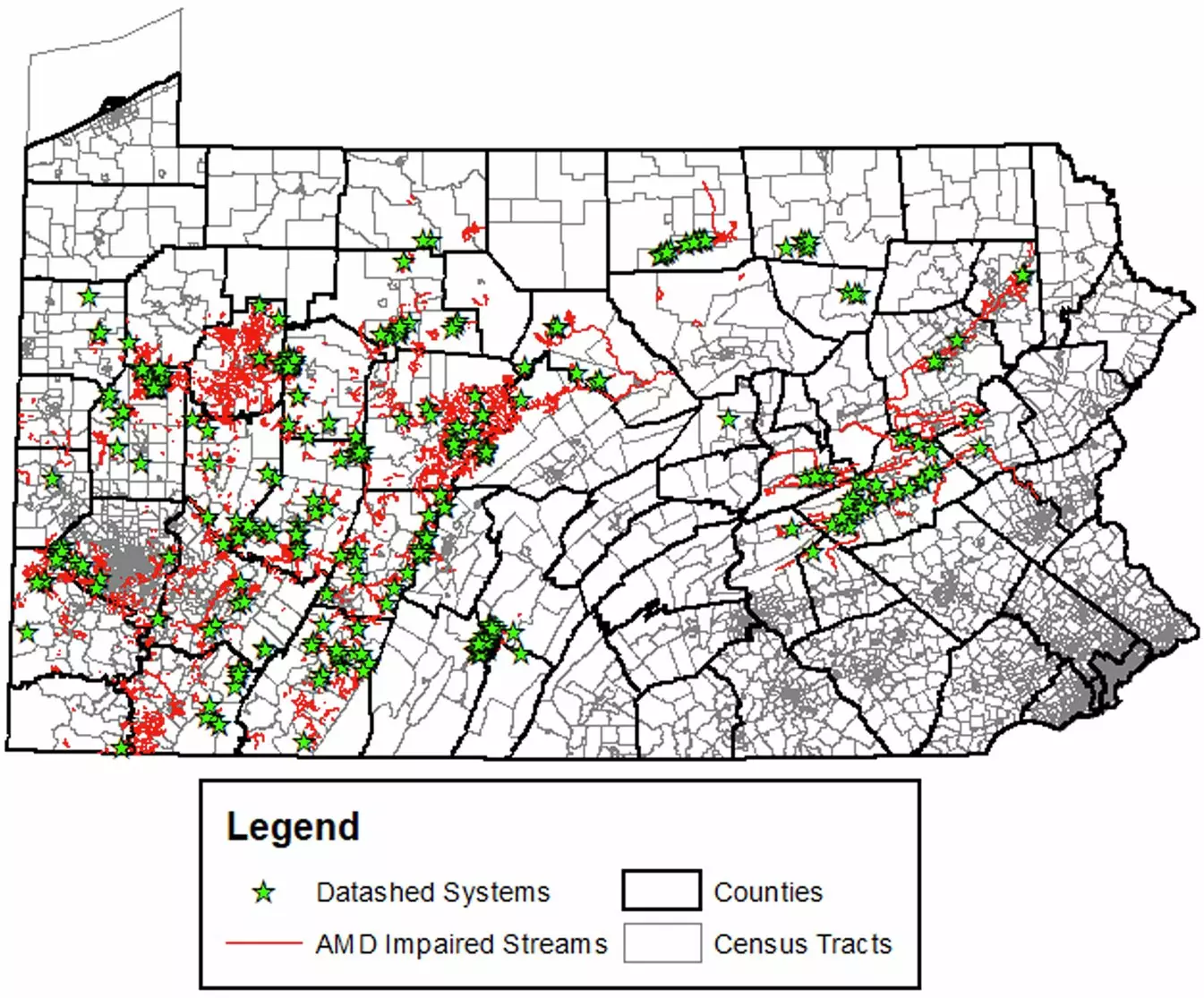Abandoned mine drainage (AMD) poses a significant environmental challenge, particularly in Pennsylvania, where a legacy of mining has left a mark on local ecosystems and communities. A recent study conducted by researchers at the University of Pittsburgh highlights the efforts to manage and mitigate the impact of AMD, while also underscoring the funding shortfalls that threaten long-term solutions. With approximately 5,600 miles of impaired rivers and streams remaining in the state, the urgency to secure appropriate funding and innovative strategies has never been greater.
Over the past 35 years, collaborative efforts by the Pennsylvania Department of Environmental Protection and various watershed organizations have led to the establishment of over 300 treatment systems aimed at averting the harmful effects of AMD. Funded by state and federal resources, these systems have been instrumental in improving water quality in more than 1,000 miles of waterways. The cost-effectiveness of these initiatives—averaging around $5,700 per kilometer each year—offers a blueprint for potential success; however, the scale of the challenge is daunting, revealed by the staggering number of untreated impaired waterways.
The research conducted by Professor Jeremy Weber and fellow scholar Katie Jo Black emphasizes the pressing need for increased financial support. Although the Infrastructure and Investment and Jobs Act (IIJA) presents a historic opportunity with $16 billion aimed at relevant environmental concerns, the passage of this plan must be coupled with strategic, targeted interventions to ensure its effectiveness.
While the environmental ramifications of AMD are well-documented, the socioeconomic impacts cannot be overlooked. Vulnerable communities situated near impaired waterways face compounded challenges linked to economic performance and health outcomes. Notably, residents in areas most affected by mine drainage experience household incomes approximately 30% lower than those in unaffected regions. Alarmingly, 2.4 million Pennsylvanians, representing around 18.5% of the population, reside in census tracts with severely impaired streams, indicating a pressing social and economic crisis intertwined with environmental degradation.
The connection between environmental health and community prosperity is evident. In many affected locations, housing values are reported to be around 50% lower than in comparable, unaffected areas, illustrating the far-reaching implications of AMD. As the energy sector transitions toward more sustainable practices, the vulnerability of these communities intensifies, revealing a critical intersection of environmental justice and economic resilience.
The research’s quantitative analysis, which evaluated 265 treatment systems, provides a clearer picture of the water quality improvements achieved through current initiatives. Remarkably, the systems were able to enhance the inflow’s average pH, elevating it from a detrimental 4.3—akin to the acidity of tomato juice—to a healthier 6 by the time it discharged into nearby streams. This significant demonstration of effectiveness establishes a compelling case for continued investment and support for existing treatment infrastructures while reinforcing the need for expansion to cover the estimated additional 6,500 miles of protected waterways.
Looking ahead, projections indicate that Pennsylvania will require an investment of approximately $1.5 billion to maintain and repair existing systems over the next 25 years. An additional $3.9 billion is needed to tackle other risks associated with abandoned mines, such as sinkholes and highwalls, which complicate the overall landscape of mine remediation efforts.
While progress has been made in the management of abandoned mine drainage in Pennsylvania, the findings from the University of Pittsburgh highlight considerable gaps in appropriations and implementation that threaten future effectiveness. Addressing AMD is not merely an environmental issue; it is fundamentally about safeguarding communities, promoting economic stability, and ensuring a sustainable future. Comprehensive, well-funded strategies that integrate community needs with ecological restoration initiatives are essential for overcoming the multifaceted challenges posed by AMD and revitalizing Pennsylvania’s rich but tarnished landscape. A collaborative approach that prioritizes funding, technical expertise, and community involvement can pave the way for a healthier environment and a more equitable future.

